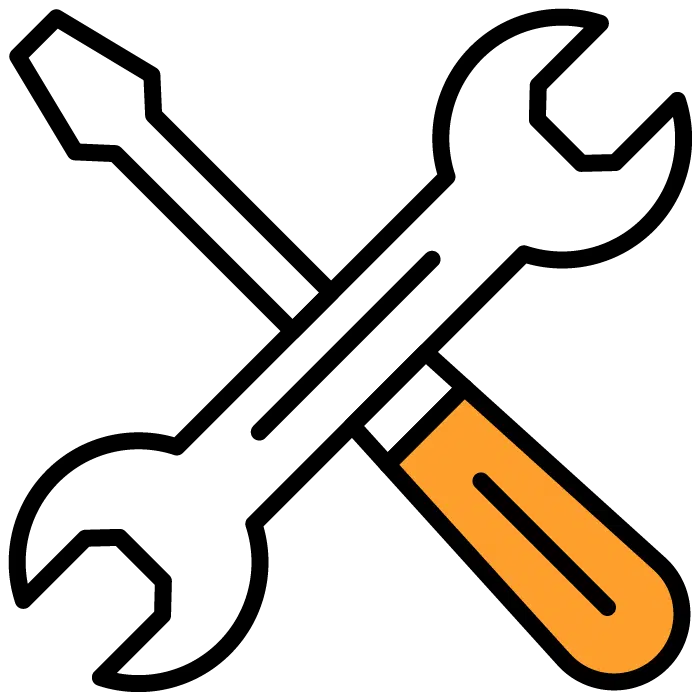Introduction
Skepticism toward direct integrity assessments, such as IntegrityFirst, is understandable and even common within the HR and recruitment industry—yet many professionals underestimate how integrity assessments reveal workplace risks that traditional methods miss. Recruiters and hiring managers may ask: “Can a test that asks straightforward questions about unethical behavior really work?” This is a valid concern—after all, it seems unlikely that anyone would openly admit to issues like theft or dishonesty in a hiring scenario.
However, years of data and real-life results tell a different story. Assessments like IntegrityFirst do more than scratch the surface. They’re crafted to reveal deeper insights into behavior and mindset, helping organizations spot risks that may otherwise remain hidden.
This article explores a detailed case study from a real client to show how IntegrityFirst goes beyond traditional screening. You’ll see how the assessment uncovers risks, even when candidates believe they can ‘beat the system.’
Why Skepticism Toward Integrity Assessments Exists
For many HR professionals, the idea of using an overt integrity assessment seems counterintuitive. Doubts can include:
- People won’t be honest if they know what’s being assessed.
- Direct questions about ethics and past behavior won’t yield real results.
- Candidates can easily ‘fake’ the test to appear more ethical.
Real-world implementation, however, has shown that even direct questions can reveal underlying attitudes, especially when compared against robust behavioral patterns and consistency checks embedded within the assessment.
Real-World Results: A Client Case Study
Let’s look at how IntegrityFirst operates in a live recruitment environment. One company, interested in evaluating the test, decided to begin with an internal pilot. This internal pilot served as a clear example of how integrity assessments reveal workplace risks that might otherwise stay hidden beneath polite interviews or glowing résumés.
The Situation: Uncovering Hidden Risks
During this pilot, a part-time administrative assistant—let’s call her “Jane”—was flagged as disqualified based on integrity concerns, mainly related to potential theft. This case exemplifies how integrity assessments reveal workplace risks even when a candidate’s past behavior appears clean on paper.
- Background: Jane had been clocking more hours than her scheduled 20-hour workweek. By working through lunch and submitting extra hours without prior approval, she gradually increased her take-home pay.
- Confession: When the company requested she cap her hours, Jane disclosed she was seeking full-time work elsewhere due to financial challenges. However, she had rationalized her actions and believed her behavior was justified.
The Role of IntegrityFirst
Jane’s reaction to the flagging was defensive. She dismissed the test as too “touchy” and questioned its relevance. This, however, is a prime example of cognitive dissonance—the psychological phenomenon where individuals rationalize their actions to maintain a positive self-image. Jane thought her personal circumstances warranted bending the rules, but the assessment identified a mindset prone to rationalizing unethical behavior.
Key Insight: The IntegrityFirst test revealed a risk factor that might otherwise have been missed, giving the company objective data to inform their next steps.
How Integrity Assessments Like IntegrityFirst Work

Integrity assessments reveal workplace risks by evaluating behavioral patterns that might indicate future issues, not just surface-level responses. Here’s how they add value:
Deeper Behavioral Insights
- Pattern Recognition: The assessment looks for consistency (or lack thereof) across multiple questions to flag potential risk patterns, not just isolated incidents.
- Cognitive Dissonance Detection: Identifies when candidates rationalize or justify inappropriate workplace behavior, even if they don’t consider themselves unethical people.
Example Behavioral Markers:
| Marker | What It Shows |
|---|---|
| Rationalizing ‘small’ theft | Justification mindset; potential for bigger issues |
| Disregarding company policy | Possible future boundary-pushing |
| Prioritizing self over company | Decreased loyalty; higher turnover risk |
Actionable Data for Hiring Decisions
Rather than offering vague personality types, tools like IntegrityFirst produce measurable results and clear risk indicators, proving how integrity assessments reveal workplace risks in ways traditional methods can’t. This is invaluable for making objective, data-driven hiring and management decisions.
Reducing Hiring Risks and Costs
With the insights gained, organizations can:
- Avoid the costs related to poor hires
- Reduce turnover
- Proactively manage ethical risks
For more strategies on using data and assessments to boost hiring outcomes, see Improve Hiring Outcomes by 70%: 5 Science-Based Candidate Assessment Strategies.
The Science Behind Overt Integrity Testing
Integrity assessments are firmly rooted in research from industrial-organizational psychology. According to meta-analyses published in reputable academic journals, overt integrity tests have demonstrated reliability in predicting counterproductive workplace behavior, including theft, dishonesty, and violation of company policies.
In fact, a recent study published in the Australian Journal of Public Administration underscores how ethical assessments—when applied systematically, can influence not just hiring decisions but broader organizational trust and culture. This adds weight to the growing body of evidence supporting their relevance in today’s hiring environments.
What Makes These Assessments Reliable?
- Validity Checks: Most high-quality tools include built-in mechanisms to catch inconsistencies, exaggerations, or ‘faked good’ responses.
- Backed by Data: IntegrityFirst uses algorithms tested on thousands of candidates, providing a real evidence base for results.
- Fairness: Designed to avoid bias, these assessments focus on patterns and tendencies rather than isolated admissions.
Further Reading: For a deep dive into compliance and legal aspects of integrity testing, read Integrity Testing in Recruitment: Ensuring Legal and Effective Hiring.
Overcoming Hiring Skepticism: How Integrity Assessments Reveal Workplace Risks and Build Confidence
It’s natural for CEOs and HR teams to hesitate before relying on any single assessment in the hiring process. The trust must be earned, often by witnessing the tool’s impact in real-world situations.
Building Trust Through Results
- Objective Evidence: IntegrityFirst doesn’t rely on intuition or assumptions; it delivers hard data and actionable insights.
- Clarity in Complexity: The right assessment can cut through ambiguity, helping you address subtle integrity risks before they grow into larger problems.
- Stakeholder Buy-In: Showing decision-makers clear patterns—and the financial risks of hiring someone whose mindset contradicts company values—can build confidence in using these tools consistently.
“The skepticism often fades after leadership sees how an integrity test clarifies ‘grey areas’ in candidate assessment.”
For more practical advice on assessing honest candidates, explore How to Write Screener Questions That Attract Honest Candidates.
Expanding the Power of Assessments With Other Tools

Screening for integrity is just one aspect of building a strong hiring process. To take evaluation further, businesses can integrate employee assessment software or tailored custom skill tests alongside integrity evaluations. These tools provide a broader understanding of both ethical attitudes and practical capabilities, ensuring you build not just a qualified but a trustworthy team.
Additionally, consistent use of candidate scorecards can help hiring managers objectively compare candidates across behavioral and integrity factors, minimizing bias and aligning decisions with organizational values.
If you’re looking for best practices to incorporate these elements, check out:
- How to Leverage Candidate Ratings and Scorecards for Better Decisions
- How to Assess Work Ethic in the Recruitment Process
Practical Tips for Deploying Integrity Assessments
To maximize the value of integrity assessments in your hiring process:
1. Clearly Communicate Purpose:
Explain to candidates and your team that integrity screening is about creating a safe, trustworthy work environment, not about “catching” people off guard.
2. Combine With Structured Interviews:
Assessments are most useful when combined with structured interviews, reference checks, and skills testing.
3. Use Assessment Insights for Development:
Even when a candidate passes, results can highlight developmental areas to monitor as you onboard and manage new hires.
4. Incorporate Workflow Automation:
Using an applicant tracking system can help streamline the assessment process, ensuring no step is missed and results are consistently considered.
Conclusion
Integrity assessments reveal workplace risks that many traditional hiring tools miss—IntegrityFirst shines a light on these hidden factors that could harm your business. Rather than serving as a trap or a punitive tool, it empowers companies with evidence-based, actionable data that guides better hiring and management decisions.
For businesses struggling with high turnover, inconsistent performance, or unexplained ethical lapses, overt integrity assessments may be the missing piece. When combined with practical workflow enhancements and objective scorecards, they significantly reduce hiring risks and foster a culture of trust.
Ready to experience the impact of data-driven integrity assessment on your hiring? Schedule a free demo with our hiring experts today to see how tools like IntegrityFirst can transform your recruitment process.




